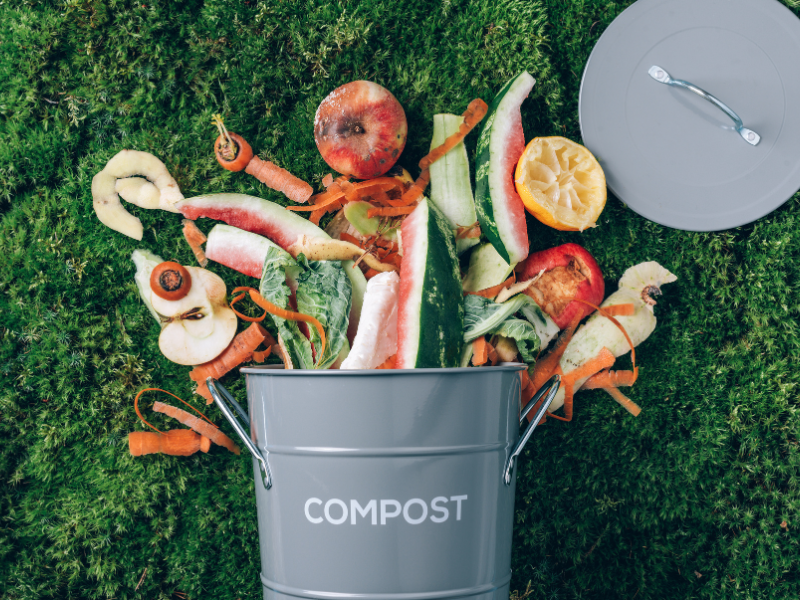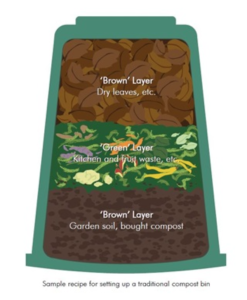
Do you often find yourself throwing away leftover food, vegetable scraps, or coffee grounds? What if I told you there’s a simple and eco-friendly way to transform your food waste into nutrient-rich compost for your garden? Composting food is not only a fantastic solution to reduce waste but also an opportunity to create fertile soil that can nourish your plants and contribute to a healthier planet. In this beginner’s guide, we’ll explore the basics of composting food and provide you with an easy way to get started on your composting journey.
What is Composting?
Composting is the natural process of decomposition, where organic materials such as food waste, leaves, and yard trimmings break down into nutrient-rich soil called compost. This dark, crumbly substance is often referred to as “black gold” due to its incredible benefits for plants and gardens.
Why Compost Food?
Composting food scraps has numerous environmental advantages. By diverting food waste from landfills, you help reduce methane gas emissions, a potent greenhouse gas contributing to climate change. Additionally, composting enriches the soil, improves its structure, enhances moisture retention, promotes beneficial microorganisms, and reduces the need for chemical fertilizers. Composting is a win-win solution for both your household and the environment.
Getting Started with Food Composting:
Select a Composting Method:
There are various methods of composting, each with its own advantages and requirements. As a beginner, we recommend starting with a simple method known as “backyard composting” or “home composting.” This method involves using a compost bin or pile in your own backyard, balcony, or even indoor space.
Gather Your Materials:
To begin composting food, you’ll need a few essential materials. Here’s a list of what you’ll need:
-
- Compost bin or container: A compost bin can be a purchased unit or a homemade structure using materials like wood pallets, wire mesh, or plastic containers. Ensure it has good airflow and drainage.
-
- Brown materials: These are high-carbon materials that provide structure to the compost pile. Examples include dry leaves, straw, shredded paper, or cardboard.
-
- Green materials: These are high-nitrogen materials that provide the nutrients necessary for decomposition. Food scraps, vegetable peels, coffee grounds, and grass clippings are excellent sources of green materials.
-
- Water: Moisture is essential for the composting process. Keep your compost pile moist but not waterlogged.

Build and Maintain Your Compost Pile:
Here’s a step-by-step guide to creating and maintaining your compost pile:
a. Choose a suitable location: Find a level spot in your backyard or balcony that receives partial sunlight. Make sure it’s easily accessible and away from your home to prevent any potential odors.
b. Layer the compost materials: Start by adding a layer of brown materials (around 3-4 inches thick). Then, add a layer of green materials (around 1-2 inches thick). Alternate between brown and green layers until your compost pile is at least 3 feet high.
c. Monitor moisture: Your compost pile should be as moist as a wrung-out sponge. If it feels too dry, sprinkle water over the pile. Conversely, if it’s too wet, add dry brown materials to absorb excess moisture.
d. Turn the pile: Every few weeks, use a pitchfork or shovel to turn the pile, ensuring oxygen reaches the decomposing materials. Turning the pile helps speed up the composting process and prevents odor.
What to Compost and What to Avoid:
Compostable Food Items:
-
- Fruit and vegetable scraps
-
- Coffee grounds and filters
-
- Tea bags
-
- Eggshells
-
- Nutshells
-
- Bread and grains
-
- Pasta and rice
-
- Yard trimmings (grass clippings, leaves, small branches)
Items to Avoid:
-
- Meat and dairy products (they attract pests)
-
- Oily and greasy foods
-
- Diseased plants
-
- Weeds with mature seeds
-
- Pet waste
Harvest and Use Your Compost:
After several months (around six months to a year, depending on various factors such as temperature and materials used), your compost will transform into a dark, crumbly substance. Congratulations! This is the finished compost you can use in your garden.
Spread the compost around your plants, mix it with potting soil for potted plants, or create a compost tea by steeping compost in water. Your plants will thrive with the added nutrients and organic matter.
Composting food is an enjoyable and environmentally responsible way to manage your household waste. By diverting food scraps from landfills and turning them into nutrient-rich compost, you contribute to a more sustainable future. Remember, composting is a learning process, and it may take a few tries to find what works best for you. So, grab a compost bin, gather your food scraps, and embark on your journey to composting success. Your garden and the Earth will thank you!